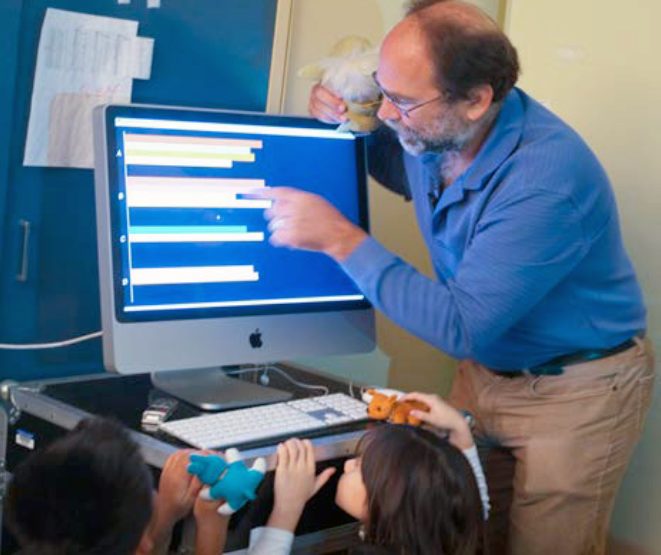Back to the Future: Embodied Classroom Simulations of Animal Foraging
February 16th, 2014
Categories: Education, MS / PhD Thesis, User Groups, Human Computer Interaction (HCI)

Authors
Gnoli, A., Perritano, A., Guerra, P., Lopez, B., Brown,J., Moher,T.About
This paper describes the design and pilot enactment of an instructional unit for elementary school students, Hunger Games, which centers on development of learner understandings of animal foraging behavior. Inspired by traditional teaching practices employing physical simulations, within the unit students engage in an embodied enactment of foraging using stuffed animals (with embedded RFID tags) as tangible avatars to represent their foraging among food patches (with camouflaged RFID readers) distributed around a classroom. Displays situated near the food patches provide students with information regarding the energy gain as the forage in the environment. A two-period pilot enactment of the unit demonstrated the feasibility of the design for classroom use, evidenced the development of affective relationships between learners and avatars, and afforded the emergence of unanticipated behaviors that promoted new questions about the science phenomena. The results suggest provisional support for the effectiveness of the unit as a science learning environment.
Keywords: Indoor location, RFID, visualization, game theory, education, learning
ISBN: 978-1-4503-2635-3
Resources
URL
Citation
Gnoli, A., Perritano, A., Guerra, P., Lopez, B., Brown,J., Moher,T., Back to the Future: Embodied Classroom Simulations of Animal Foraging, TEI '14 Proceedings of the 8th International Conference on Tangible, Embedded and Embodied Interaction, Munich, Germany, pp. 275-282, February 16th, 2014. https://doi.org/10.1145/2540930.2540972